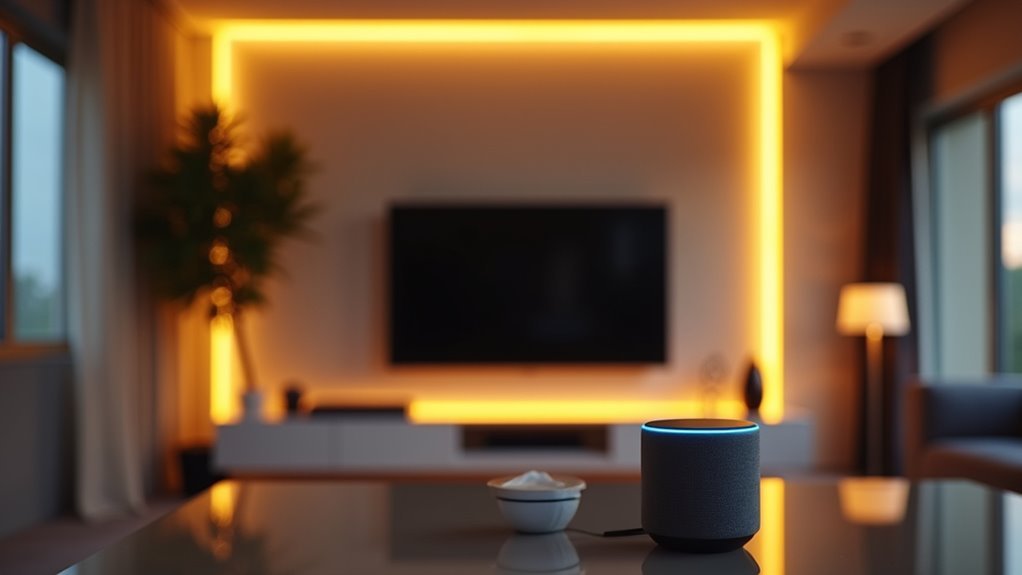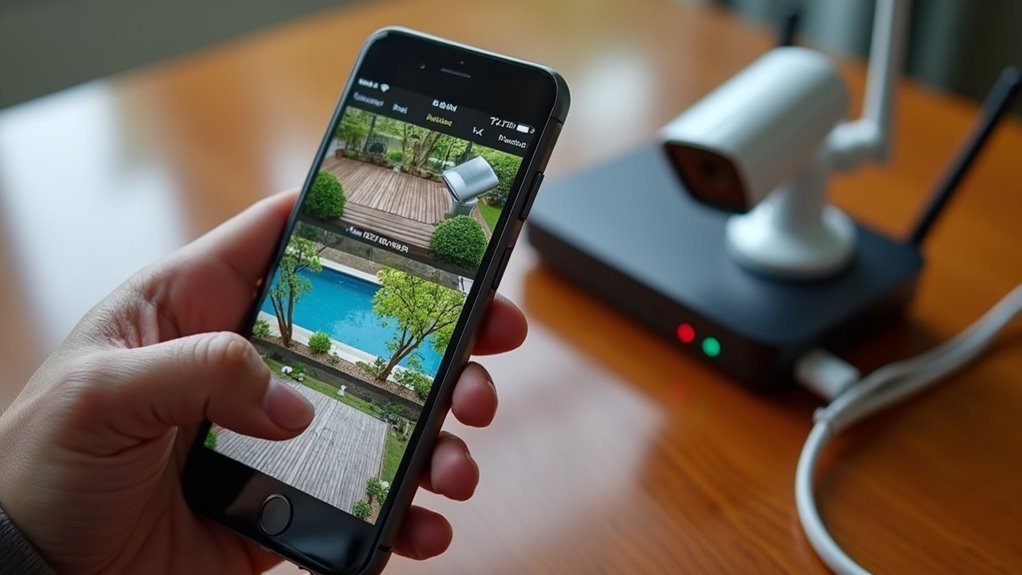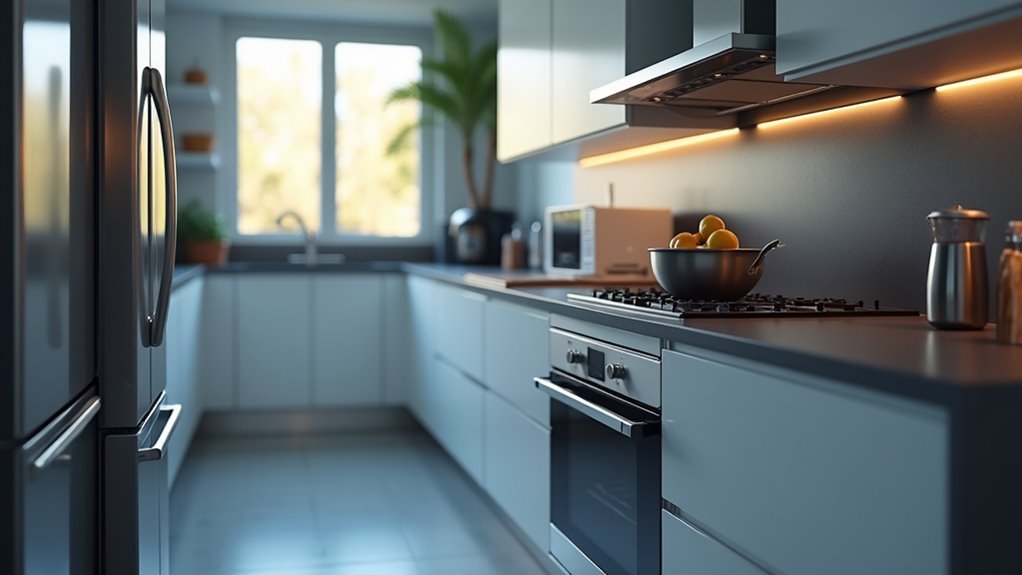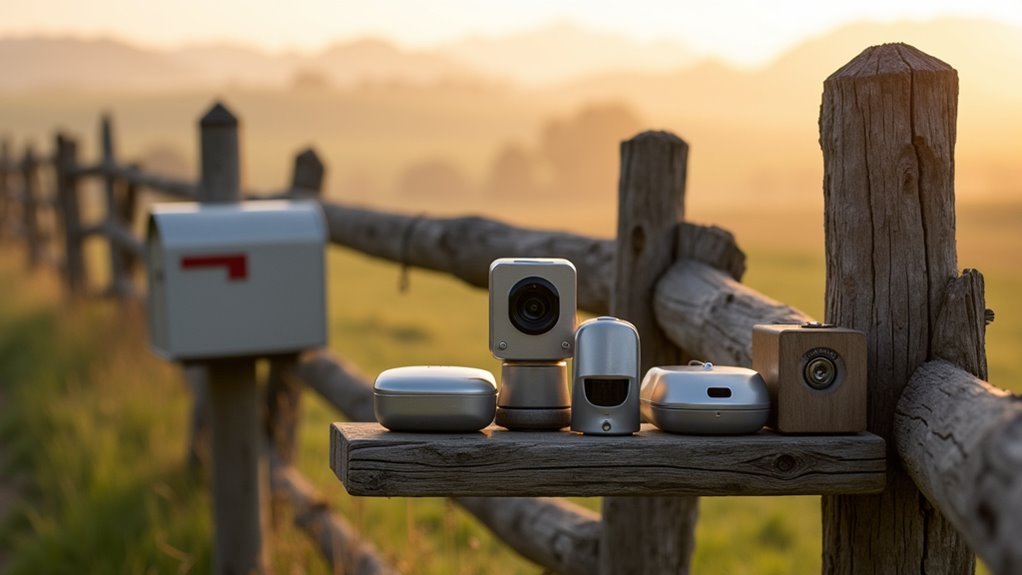You’re probably tired of manually switching lights on and off throughout your day, walking into dark rooms, or forgetting to turn them off when you leave. Smart home lighting automation can transform how you interact with your living space, making it more convenient, energy-efficient, and responsive to your needs. These five proven methods will help you create a lighting system that anticipates your movements and preferences without constant manual intervention.
Schedule-Based Lighting That Follows Your Daily Routine

While traditional light switches require you to manually control each fixture throughout the day, schedule-based lighting automation transforms your home into an intelligent environment that anticipates your needs.
Your automated home can program smart bulbs to align with daily routines, enhancing convenience and energy efficiency.
Morning schedules improve wake-up experiences by gradually increasing light intensity, mimicking natural sunrise patterns.
Evening lighting automation dims fixtures at predetermined times, signaling it’s time to wind down.
Smart lighting systems accommodate seasonal changes, adjusting schedules based on daylight hours to maximize energy savings.
Modern lighting automation integrates motion sensors with customizable schedules through user-friendly apps.
You’ll easily modify timing based on lifestyle changes or preferences, creating an intelligent system that adapts to your family’s unique patterns while reducing energy consumption.
Motion-Activated Lights for Hands-Free Control
Beyond pre-programmed schedules, motion-activated lights deliver instant responsiveness by detecting your presence and illuminating spaces automatically.
Your smart lighting system transforms into a hands-free control solution that enhances both convenience and energy efficiency.
Motion sensor integration works seamlessly with popular home systems like Philips Hue, enabling sophisticated smart home automation.
You’ll reduce energy consumption considerably since lights automatically turn off after detecting no movement for predetermined periods. This intelligent functionality proves especially valuable when you’re carrying groceries, have mobility challenges, or simply want effortless illumination.
These motion-activated lights excel in hallways, bathrooms, and closets where traditional switches aren’t always convenient.
You can customize sensitivity levels and timer durations to match your household’s patterns, creating a perfectly responsive lighting environment that anticipates your needs.
Voice Commands Through Smart Assistants

Voice commands through smart assistants like Amazon Alexa, Google Assistant, and Apple Siri revolutionize how you control your home lighting system.
This smart technology transforms how you interact with your smart lighting system, making it incredibly convenient to turn on the lights or dim the lights with simple voice commands.
Voice control offers these powerful capabilities:
- Hands-free operation – Simply say “turn on the lights” without touching switches
- Scene control – Create mood lighting with commands like “movie time” or “dinner mode”
- Multi-room management – Control lighting automation across your entire home simultaneously
- Automated scheduling – Set automation routines that activate your home lighting based on time or events
Recent advancements in voice recognition make smart assistants increasingly reliable for seamless lighting automation control.
Geolocation Triggers When You Arrive Home
When you’re approaching your home after a long day, geolocation triggers eliminate the hassle of arriving to a dark house by automatically activating your smart lights based on your smartphone’s GPS location.
Smart lighting systems use geofencing technology to detect when you cross a predefined radius around your home, ensuring you’re well-lit upon arrival and eliminating need for switches.
You’ll configure this lighting automation through your smart lighting app, creating customized zones that turn on/off lights as you come and go.
This feature integrates seamlessly with other smart home devices, allowing extensive automation that adjusts multiple systems simultaneously.
Beyond convenience, geolocation triggers promote energy efficiency by ensuring lights operate only when needed, supporting your sustainability goals while delivering effortless home illumination.
Ambient Light Sensors for Automatic Brightness Adjustment

Ambient light sensors transform your smart lighting system into an intelligent network that automatically adjusts brightness levels based on natural light conditions throughout your home.
These smart devices detect changing light levels throughout the day, enabling automatic brightness adjustment without manual intervention. Your home automation system creates a responsive lighting environment that adapts to natural rhythms while maintaining ideal illumination.
Key benefits of integrating ambient light sensors include:
- Energy Efficiency – Reduce energy consumption by operating lights only at necessary levels
- Customization of Settings – Program specific brightness levels for different times and activities
- Enhanced Comfort – Maintain consistent ambiance through dynamic adjustments
- Smart Integration – Seamlessly connect with existing smart lighting systems for thorough control
You’ll experience improved comfort while greatly lowering electricity costs through this intelligent lighting solution.
Frequently Asked Questions
How Can I Automate My Lights at Home?
You can automate your lights by installing smart bulbs or switches controlled through mobile apps, voice assistants like Alexa, motion sensors, scheduled timers, and smart home hubs for centralized control.
How to Make Lights Turn on Automatically?
Install motion sensors in your rooms to automatically trigger lights when you enter. You can also use smart plugs with scheduling features or set up geofencing on your smartphone for automatic activation.
What Is the Cheapest Way to Automate Lights?
You’ll find smart bulbs are your cheapest option at $10 each, requiring no rewiring or installation costs. They’ll give you individual control through smartphone apps, making automation simple and affordable for any budget.
How to Control Lights While Away?
You can control lights remotely using smart lighting apps on your phone. Set up automated schedules, integrate motion sensors with security systems, or use voice commands through Alexa to manage lighting from anywhere.





Leave a Reply